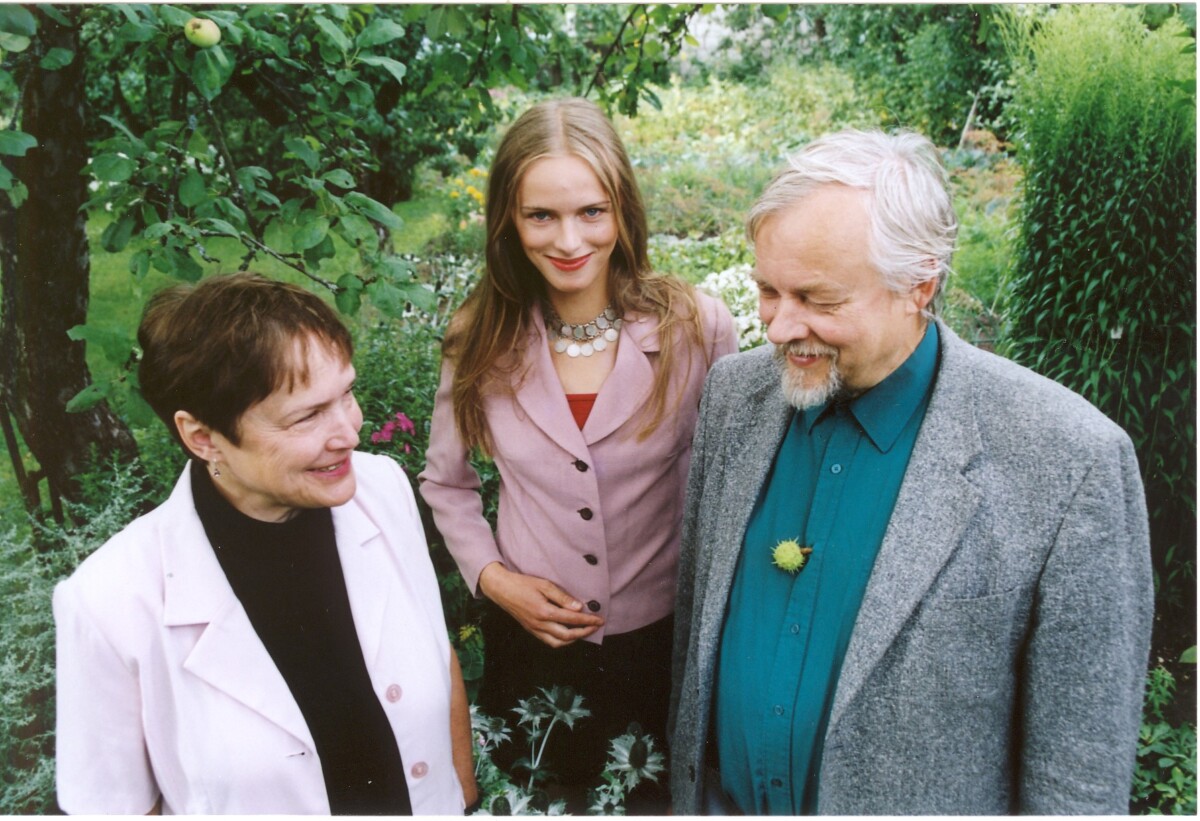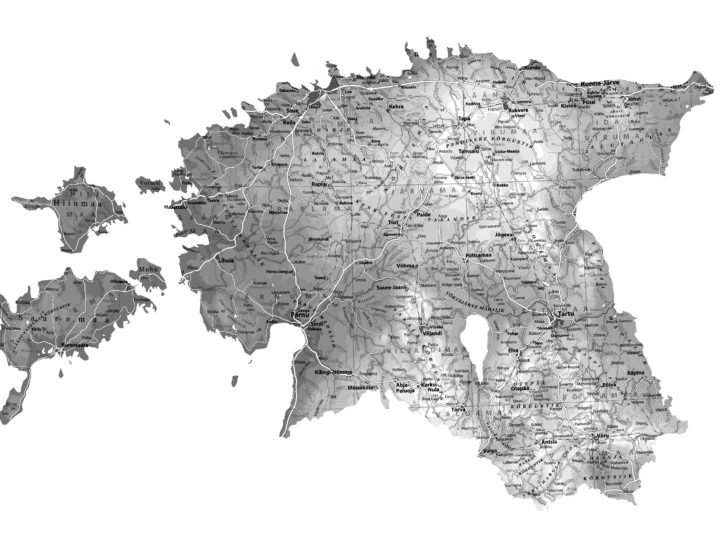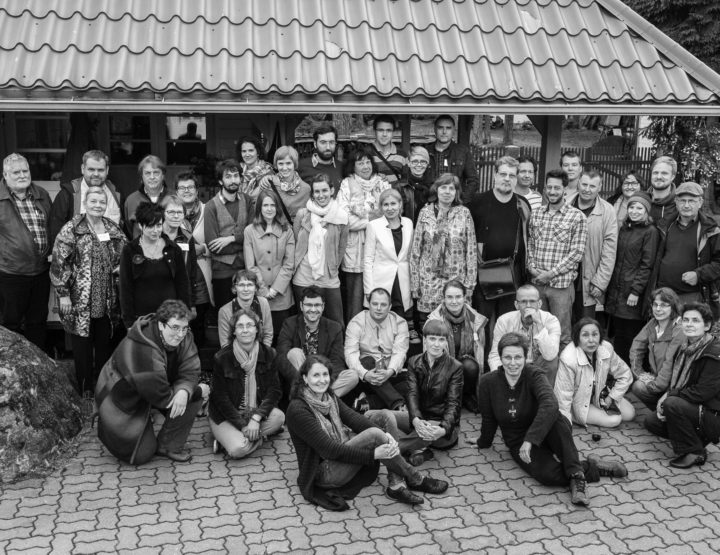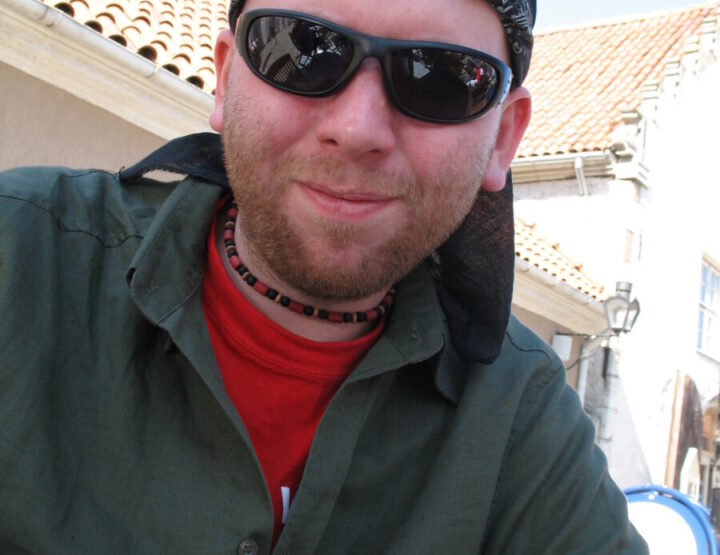This spring saw the publication of poetry collections by mother and daughter, almost at the same time – Ly Seppel’s Sparkle of Time (Ajasära) and Kristiina Ehin’s St. Simon’s Day (Simunapäev). Each is remarkable in its own way – for Ly Seppel this was the first collection of poetry in 29 years, with the book marking her 60th birthday. Kristiina Ehin has proven herself a young poet of quality who should be taken seriously. This simultaneous publication can even be taken as a sort of “passing on the crown”; in any case this was a reminder of the Ehin family of poets in Estonia.
Family dynasties are not rare in Estonian literature. Notable families include the Viidings (Paul, Juhan ja Elo), Rummos (Paul ja Paul-Eerik, and the latter’s wife Viiu Härm), Rauds (Mart, Eno with wife Aino Perviku and their son Rein), and Jaan Kaplinski and Tiia Toomet, whose children (Lauris, Lemmit, Elo-Mall) also published fiction in the 1990s. There is a surprising concentration of quality in the small nation of Estonia.
Andres Ehin (1940) and Ly Seppel (1943) both belong to the ‘cassette generation’ of the 1960s. Ly Seppel debuted in 1965 with her collection Every Morning I Open My Palm (Igal hommikul avan peo) and Andres Ehin in 1968 with the collection Wolves’ Oak (Hunditamm). Both studied at Tartu University in the 1960s; Andres earned his degree in Finno-Ugric Studies, and Ly in Estonian Language and Literature. After graduation, Andres Ehin worked as a teacher in the Jamali-Neenets national region in Siberia, then in Estonia as a cultural journalist and editor of an encyclopaedia.
Ly Seppel furthered her studies at the Universities of Azerbaijan and Moscow, reading Turkish-Tartar languages, and then became a prominent translator. Since 1974 they have been a family and have lived in Rapla as freelance writers and translators. Their second oldest daughter, Kristiina Ehin, born in 1977, has been involved since 1996 in the literary group ‘Erakkond’. She has published two collections of poetry (her debut Spring in Astrakhan (Kevad Astrahanis) in 2000), worked as a dance teacher, studied both at Tartu University and Tartu Art School, done some translating, and is currently doing her MA in folk poetry at Tartu University.
Besides poetry, translating is the second significant common denominator in the Ehin household. Andres Ehin and Ly Seppel’s joint effort has introduced Estonians to the work of A. Navoii, Turkish (including Y. Emre) and Finnish poetry, and their greatest achievement, Thousand and One Nights. They have translated poetry separately as well, and they are at the forefront of Estonian translators.
Andres Ehin (see ELM no 5 and 11) is quite an autonomous creator in Estonian poetry, the only intentionally surrealist poet in Estonia for quite a long period of time. The tradition of Estonian surrealism began with the exile poet Ilmar Laaban, whose collections were published in Sweden in 1946 and 1957. Ehin, who can be regarded as his “heir”, wrote his first poems in 1958. It can only be imagined what would have been different had Ehin’s debut collection appeared a bit earlier. Estonian poetry of the 1960s changed very quickly, the end of the decade was remarkably different from the beginning, and each new idea was quite influential.
Ehin and Alliksaar, the great poetry innovator of the “period of thaw”, were only later revealed as the ones to introduce the biggest paradigm changes into Estonian poetry. The books of both writers (posthumously in the case of Alliksaar, who died at age 40) were only published when the main storms had already passed, and another, new and sceptical generation, headed by Juhan Viiding, was emerging. Nevertheless, Ehin established himself and is still going strong, belonging to the small group of the ‘cassette generation’ who have managed to retain their creative energy in the new century and to keep abreast of changes. In Ehin’s case it could even be said that the changes have kept abreast of him, since the other practitioners of surrealist poetry emerged as late as the early 1990s (e.g. Jaan Malin). At that time, surrealism elsewhere in the world had already become passé, but in Estonian poetry it is a fresh and interesting possibility. “Official” recognition reached Andres Ehin quite late – in 1996 he received the Cultural Endowment’s annual award for the best poetry collection for his Consciousness is Snakeskin (Teadvus on ussinahk). In 2001 he received the National Award for his collected poetry The Subconscious is Always Drunk (Alateadvus on alatasa purjus).
Andres Ehin’s work is perhaps distinguished from ‘typical’ surrealist writing by a greater emphasis on comic effect; he is without a doubt a humorous poet. Going beyond traditional surrealism, he also uses more allusions to specific everyday reality, into which he then introduces unreal details. Occasionally Ehin has anticipated the postmodernist ‘grammatical poetry’ by several decades. In such poetry the meaning has been totally demolished, with only syntactic structure surviving to suggest a meaningful sentence. Andres Ehin’s poetry in the 1980s experienced a low tide and a slight change of direction. He retreated from his previous carnival of words and images, and the odd text he produced revealed the desolate mood of the oppressive times, mostly still expressed in a surrealist key. Ehin in the 1990s seemed to fully rediscover his former treasure-trove.
At first sight, Ly Seppel seems to be a poet with an entirely different manner from Andres Ehin. She has published three collections of poetry so far, the most significant of which is Circle of Shadows around the Fire (Varjuring ümber tule) in 1974, which was proclaimed the best poetry collection of the year (called the Smuul Award at the time). In 1996 Ly and Adres received a joint award from the Finnish Ponkala Foundation for the best introduction of Finnish culture abroad.
Ly Seppel’s poetry is characterised by a quiet tone and a focus on general human topics, the progression of time, the ability to capture fleeting but significant experiences, and on momentary pictures of everyday life. What really matters in her poetry is being a woman, mother and daughter, as well as a bearer of nature’s continuity. This continuity is not especially forcefully stressed but shines through in Seppel’s poetry, stubbornly and consistently. Linguistic motifs and images of foreign countries, where her activities as a translator have taken her, prevail in Circle of Shadows (Varjuring).
Seppel’s poetry could be placed in the tradition of Estonian oriental poetry, but this tradition has been largely influenced by Chinese and Japanese poetry. In her poetry a feature that definitely unites the entire Ehin family is revealed – a fascination with the exotic, including Seppel’s interest in Turkish-Tartar culture, and Andres Ehin’s interest in cultures with little connection to Estonia (he has for example written about Korean contemporary literature). It is perhaps suitable here to add Kristiina Ehin’s fascination with archaic folk songs and legends, where she has found a pleasing intellectual environment for herself. It is perhaps odd to call folk songs exotic, so let me re-phrase: all three seek a home in a mentally, spatially or temporally distant consciousness, and they feel comfortable at the border areas of cultures or of the conscious and the subconscious.
The interest in Ly Seppel’s and Kristiina Ehin’s poems in everything strange actually seems very cosy, although they cannot be associated with surrealism as in Andres’s poems. Good examples here are the opening poems of their first collections. Ly Seppel’s poem Every Morning I Open My Palm, is written in a typically early-1960s colloquial, gently rhetorical, free verse. In the poem, the main character sets into flight little hawks every morning, ‘to bring knowledge on wings and to appreciate beauty’. After flying around briskly all day, they return in the evening, breathless, tell about their activities and listen to admonitions. This is a poem quite typical of 1960s imagist language, focusing on a relatively open metaphor that has been developed like prose. There is, however, one exception – the young hawks. They are not wholly positive characters: they are simultaneously small and friendly, but nevertheless hawks, birds of prey. In the poetry of the time her hawks were certainly unexpected and ‘unjustified’.
The poems of Kristiina Ehin’s first collection are lyrical love poems. They are generally set on the beach, but the characters are, for example, a creaking kitchen door and a military coat — clearly resembling Andres Ehin’s images. Kristiina’s earlier poems are full of unexpected cracks, through which a strange surrealist motif or two emerge in the midst of a young girl’s love poetry. However, if we compare Kristiina Ehin’s and Ly Seppel’s poems, it seems that those somewhat weird shifts come rather from her mother – at times sudden, perhaps even naïve, an originality that always gets stuck past the border where extravagance starts. The poems of both Kristiina and her mother occasionally exhibit an unexpected child-like, but lucid, tone.
Compared with her first collection, Kristiina’s latest is remarkably more mature and serious, while retaining the first book’s freshness and simple force. The debut presented a girl’s poetry, whereas St. Simon’s Day carries the voice of a woman, with powerful images, such as ‘I am a big sleepy queen bee / of a honeycomb-like universe’, but also conveys a tragic and vital existential understanding. St. Simon’s Day thus approaches the recognition of life’s deep simplicity present in Ly Seppel’s book Circle of Shadows around the Fire.
The most typical manifestations of the Ehin family spirit are the two books for children by Ly Seppel, Book of Kaarin and Eeva (Kaarini ja Eeva raamat, 1981) and Book of Dreams (Unenäoraamat, 1984). The first contains the conversations of two girls with their mother and father about the ways of the world; in the second, the illustrations come from Kristiina’s older sister Piret’s childhood drawings. In the second, the whole family tells one another their dreams. These books arose directly from the everyday life of the family: the children’s surprising and funny questions characterise the world of the parents as well (compare with Ly Seppel’s verses, ‘I stare at the milk can / I look into the milk can / snapdragon now I see you’). An existence that coincides with dreams and balances at the edge of a strange world is familiar to all of them.
In conclusion, two vivid memories. Last winter Andres and Kristiina Ehin performed together at a poetry evening. Kristiina’s fragile and airy style of reading alternated with Andres’s suggestive, deep, resonant shaman’s voice. Oddly, this contrast seemed most suitable: both supporting each other, both considerate of each other’s poetry despite their clear differences, maybe even shyly proud of each other. In the spring, Kristiina presented a rap-song, written with her sisters, at Ly Seppel’s jubilee party, which described their mother’s life and the family’s love for her. The initially contrasting contents and form suddenly seemed highly appropriate, containing a peculiar harmony that is typical of the entire family. This song was indeed like the entire Ehin family – always eager for the new and strange, warm, affectionate and very funny.
© ELM no 17, autumn 2003





